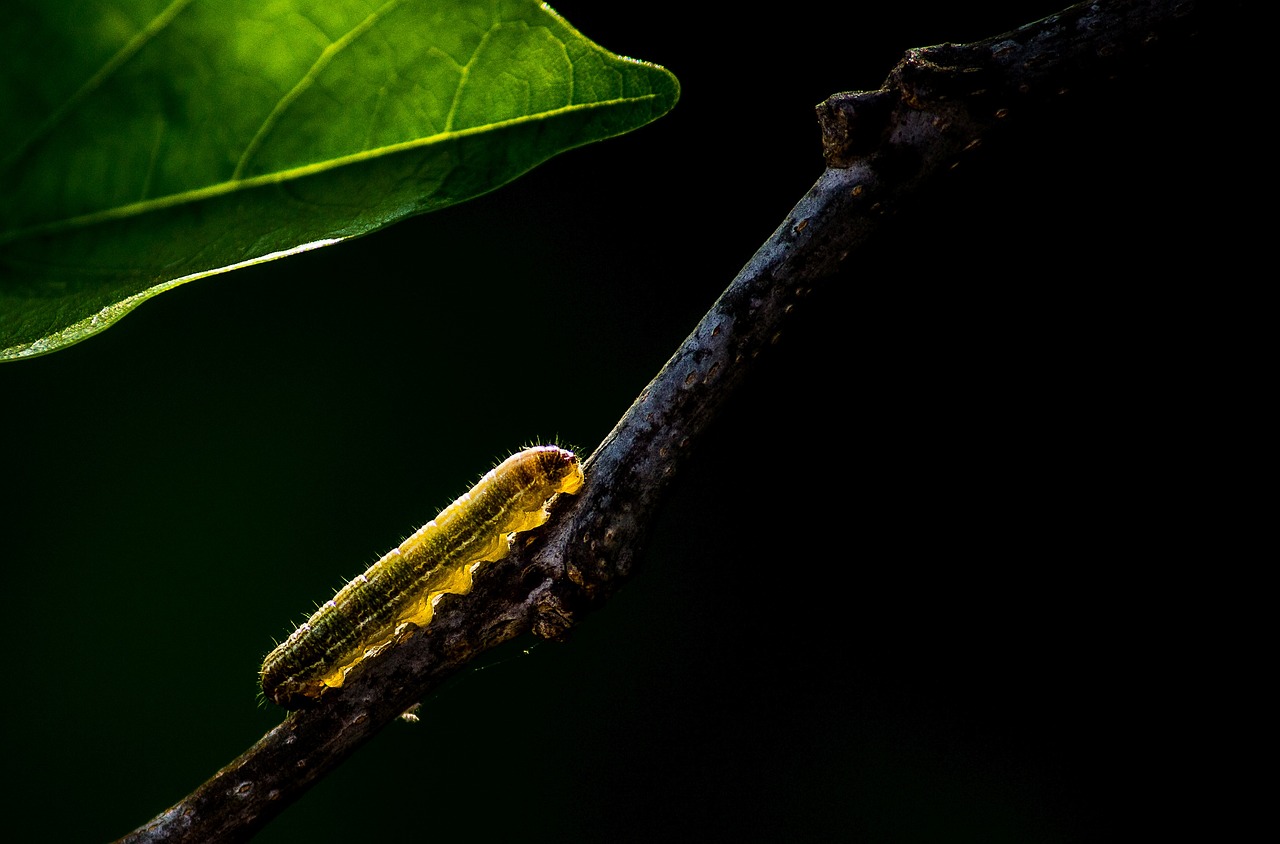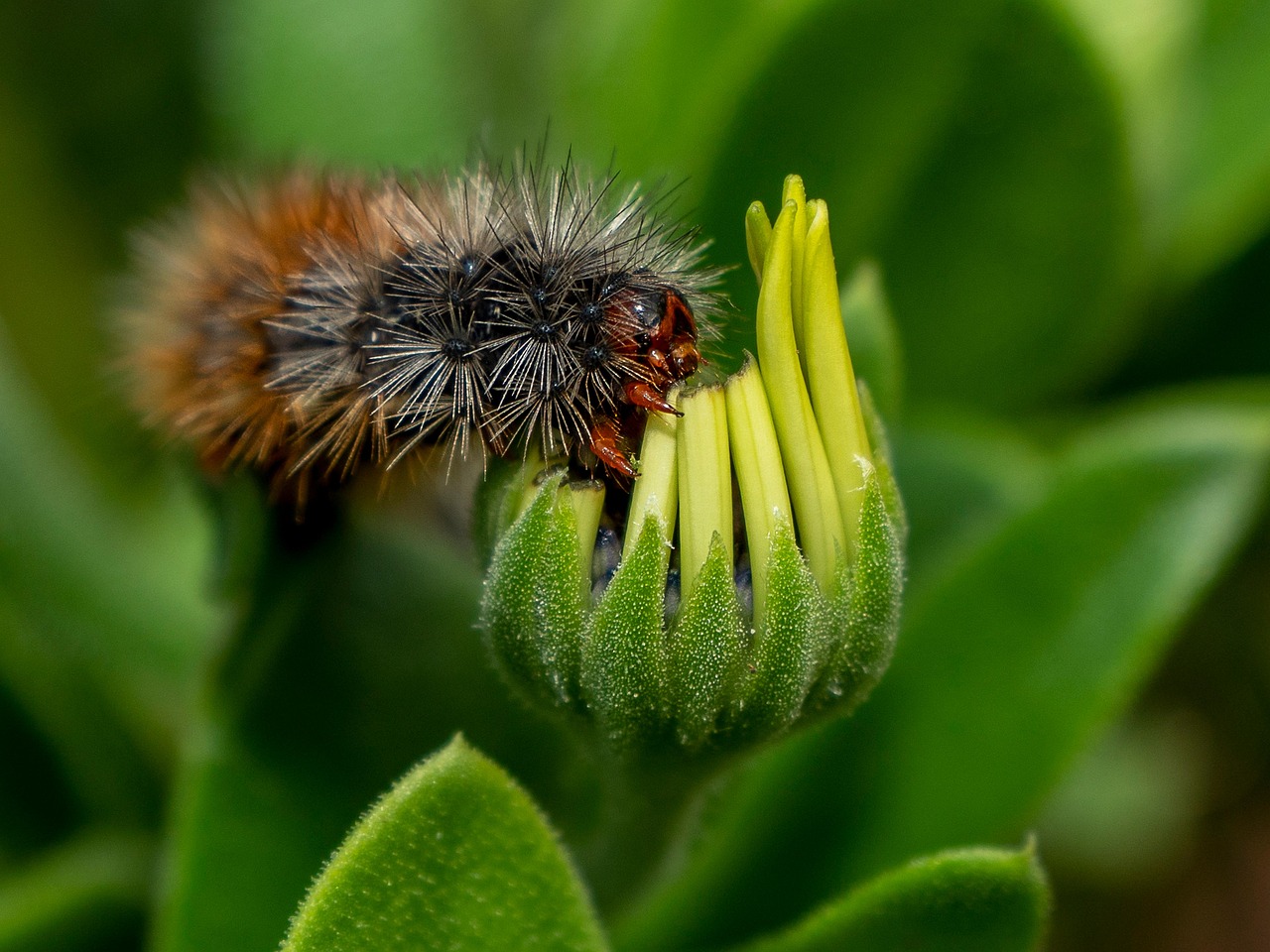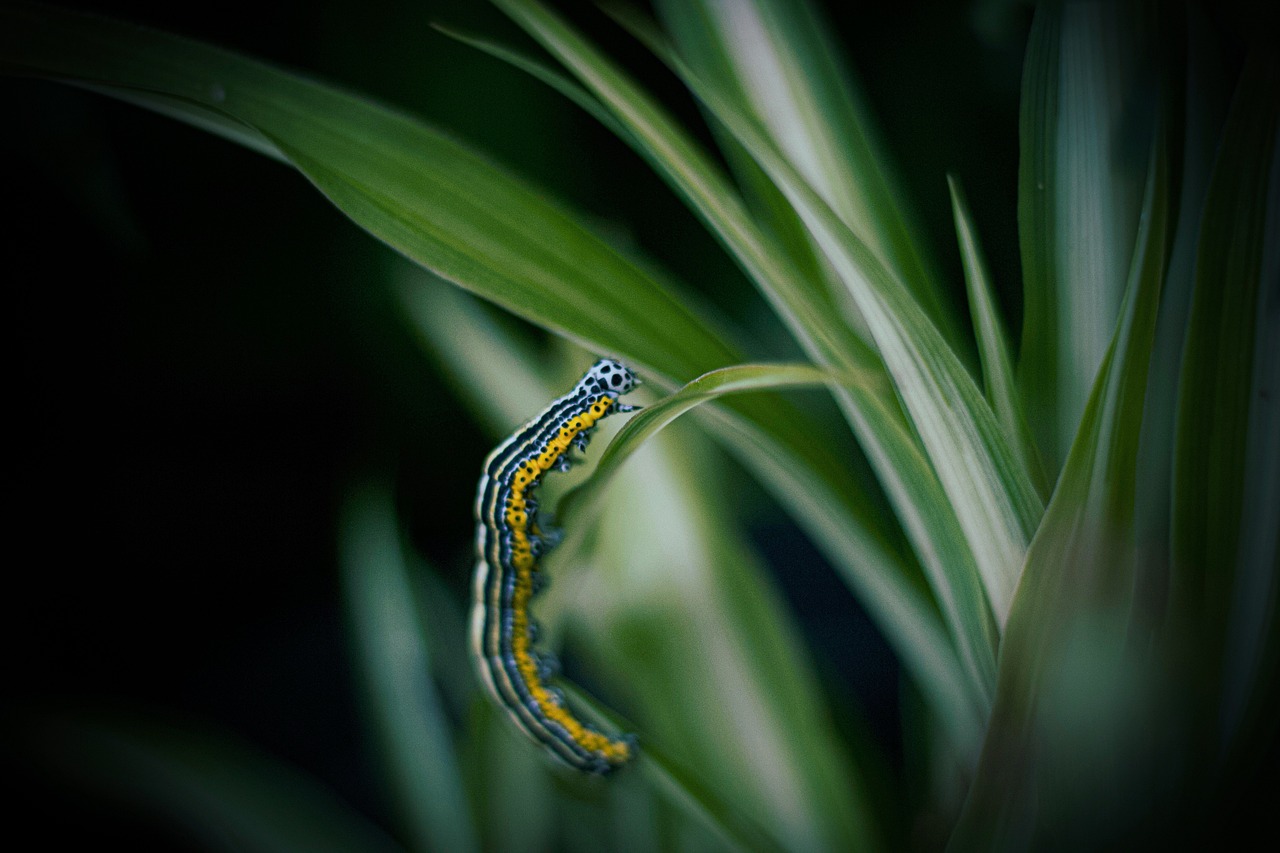Black spiky caterpillars are intriguing creatures that often capture the attention of curious observers. Their unique appearance and fascinating behavior make them stand out in the insect world. This article will help you identify these punk rock crawlers and understand their role in nature.
Black spiky caterpillars belong to various species, notably within families like the Lasiocampidae and the Arctiidae. These caterpillars are characterized by their distinctive black coloring and spiny projections. The spikes serve multiple purposes, including protection against predators and camouflage in their natural habitats.

These caterpillars undergo a remarkable transformation, eventually becoming beautiful moths or butterflies. The spiky appearance of the larvae is not just for show; it plays a crucial role in their survival. Many animals find them unpalatable due to their spines and potential toxins.
Identifying Black Spiky Caterpillars
Identifying black spiky caterpillars can be an enjoyable challenge. Understanding their physical characteristics and behaviors is essential for accurate identification. Below are some key features to help you recognize them:
- Coloration: Most black spiky caterpillars have a dark or black colored body with spikes or hair-like projections.
- Size: They vary in size, typically ranging from 1 to 4 inches long.
- Body Structure: Their bodies are often segmented, and the spikes can vary in length and density.
- Habitat: Commonly found on various host plants, such as shrubs and trees, where they feed on leaves.
Some species may have specific markings that can aid in identification. For example, certain black spiky caterpillars may exhibit stripes or spots of other colors, enhancing their appeal. The life cycle of these caterpillars is also an interesting aspect to observe.
Life Cycle of Black Spiky Caterpillars
The life cycle of black spiky caterpillars consists of four main stages: egg, larva (caterpillar), pupa (chrysalis), and adult (moth or butterfly). Here’s a brief overview of each stage:
| Stage | Description | Duration |
|---|---|---|
| Egg | The female lays eggs on host plants, often in clusters. | 1-2 weeks |
| Larva (Caterpillar) | The hatchlings emerge as caterpillars, feeding on leaves. | 2-6 weeks |
| Pupa (Chrysalis) | Caterpillars transform into pupae, undergoing metamorphosis. | 1-3 weeks |
| Adult | The fully formed moth or butterfly emerges from the chrysalis. | Varies by species |
This transformation is a remarkable process that showcases the resilience and adaptability of these fascinating creatures. Observing them at different life stages can provide valuable insights into their ecological roles and behaviors.
In addition to their striking appearance, black spiky caterpillars also play a vital role in ecosystems as herbivores. They contribute to plant population control and serve as food for various predators, including birds and other insects. Understanding their life cycle is essential for appreciating the balance they maintain within their habitats.
Stay tuned as we delve deeper into the behaviors, habitats, and conservation challenges faced by these punk rock crawlers in the following sections.
Behavior and Feeding Habits

Black spiky caterpillars exhibit fascinating behaviors that are essential for their survival. Their feeding habits, in particular, are crucial for their growth and development. Understanding how these caterpillars interact with their environment provides insights into their ecological significance.
Feeding Preferences
These caterpillars predominantly feed on the leaves of various plants. Their diet typically includes:
- Deciduous Trees: Many black spiky caterpillars prefer trees such as oaks, maples, and willows.
- Shrubs: They also consume leaves from shrubs like hawthorn and elderberry.
- Herbaceous Plants: Some species feed on softer, herbaceous plants, particularly during their early instars.
Their feeding style can be quite voracious, especially during the larval stage. This intense feeding allows them to accumulate energy reserves necessary for their transformation into the pupal stage.
Defensive Mechanisms
The spiky appearance of these caterpillars serves not only as a visual deterrent but also as an effective defense mechanism. Here are some of the primary strategies they employ:
- Camouflage: Their dark coloring helps them blend into their surroundings, making it difficult for predators to spot them.
- Spines and Hairs: The spikes on their bodies can cause discomfort to animals that attempt to eat them. In some species, these spines may also contain toxins that can deter predators.
- Behavioral Responses: When threatened, some caterpillars may curl up or drop from the host plant to avoid capture.
These defensive adaptations highlight the evolutionary strategies that black spiky caterpillars have developed to survive in a competitive environment.
Habitat and Distribution

Black spiky caterpillars are found in diverse habitats across various regions. Their distribution is influenced by the availability of host plants and environmental conditions. Common habitats include:
- Forests: They thrive in temperate forests where deciduous trees are abundant.
- Gardens: Many species are frequently found in gardens and parks where host plants are cultivated.
- Meadows: Open fields with a mix of grasses and wildflowers also provide suitable environments.
The choice of habitat affects both their feeding habits and their interactions with other species. In forests, for example, they may encounter various predators, including birds and small mammals.
Impact of Environmental Factors
The survival and distribution of black spiky caterpillars are closely linked to environmental factors. Key factors include:
- Climate: Temperature and humidity levels can impact their growth rates and life cycle duration.
- Plant Availability: The presence of suitable host plants is crucial for their feeding and development.
- Pesticides: Agricultural practices that involve pesticide use can significantly affect caterpillar populations.
Understanding these environmental influences is essential for conservation efforts aimed at protecting these unique insects and their habitats.
Role in Ecosystems
The ecological role of black spiky caterpillars extends beyond their individual lives. They contribute to a variety of ecological processes within their environments. Notably, they serve as:
- Herbivores: By feeding on plants, they help regulate plant growth, promoting biodiversity within ecosystems.
- Prey: These caterpillars are an essential food source for a variety of predators, including birds, small mammals, and other insects.
- Pollinators (Indirectly): As they transform into moths or butterflies, they play a role in pollination, aiding in plant reproduction.
The interconnections within ecosystems emphasize the importance of black spiky caterpillars in maintaining ecological balance. Their presence indicates a healthy environment that supports diverse life forms.

Conservation Challenges
Despite their fascinating traits and ecological contributions, black spiky caterpillars face several conservation challenges. Understanding these issues is vital to developing effective strategies for their protection.
Habitat Loss
One of the most significant threats to black spiky caterpillars is habitat loss. Urbanization, agriculture, and deforestation have led to the destruction of their natural environments. This loss of habitat can result in:
- Decreased Food Sources: As plants are removed, the availability of suitable host plants for feeding diminishes.
- Fragmented Populations: Habitat fragmentation can isolate caterpillar populations, making it difficult for them to find mates and leading to decreased genetic diversity.
- Increased Predation: With fewer places to hide, caterpillars become more vulnerable to predators.
These factors combined can significantly impact the survival rates of black spiky caterpillars in affected areas.
Pesticide Use
The use of pesticides in agricultural practices poses another serious threat to these caterpillars. Pesticides can have various harmful effects, including:
- Toxicity: Many pesticides are designed to kill insects, which can inadvertently harm non-target species like black spiky caterpillars.
- Bioaccumulation: Pesticides can accumulate in the food chain, leading to higher concentrations that affect not only caterpillars but also their predators.
- Disruption of Life Cycles: Pesticides may interfere with the normal development and behavior of caterpillars, preventing them from reaching maturity.
These issues highlight the need for more sustainable agricultural practices that protect beneficial insects while maintaining crop health.
Community Awareness and Involvement
Community awareness plays a crucial role in the conservation of black spiky caterpillars. Educating the public about these unique creatures can foster a sense of responsibility and encourage protective actions. Here are some ways communities can get involved:
Education Programs
Implementing educational programs in schools and local organizations can help raise awareness about black spiky caterpillars. Topics may include:
- Life Cycle and Identification: Teaching people how to identify different species and understand their life cycles can increase appreciation for these insects.
- Ecological Importance: Highlighting the role of caterpillars in ecosystems can foster respect for their place in nature.
- Sustainable Practices: Educating communities on sustainable gardening and landscaping practices that benefit local wildlife.
Citizen Science Initiatives
Encouraging citizen science initiatives can empower community members to contribute to research and conservation efforts. Activities may include:
- Monitoring Populations: Community members can participate in surveys to track populations and distribution of black spiky caterpillars.
- Reporting Sightings: Creating platforms for sharing sightings can help researchers gather valuable data on species presence and behavior.
- Habitat Restoration Projects: Organizing volunteer events focused on restoring native plant habitats can benefit local caterpillar populations.
By engaging communities in these efforts, it is possible to create a network of support for black spiky caterpillars and other beneficial insects.
Future Research Directions
Ongoing research is essential to address the challenges faced by black spiky caterpillars. Future studies could explore various aspects, including:
- Population Genetics: Understanding genetic diversity within populations can help inform conservation strategies.
- Climate Change Effects: Investigating how climate change impacts their habitats, life cycles, and interactions with other species.
- Pesticide Impact Studies: Conducting research on the effects of specific pesticides on various life stages can guide safer pest management practices.
This research is vital for developing effective conservation strategies that ensure the survival of black spiky caterpillars and their habitats for future generations.
Conservation Strategies
To effectively support black spiky caterpillar populations, several conservation strategies can be implemented. These approaches can create a more sustainable environment for these unique insects. Some of the key strategies include:
- Habitat Protection: Preserving existing habitats is crucial. This can be achieved through the establishment of protected areas and conservation easements that limit development and agricultural expansion.
- Restoration Projects: Actively restoring degraded habitats can create new areas for black spiky caterpillars to thrive. Planting native flora will provide essential food sources and shelter.
- Pollinator Gardens: Encouraging the planting of pollinator-friendly gardens in residential areas can help support not only caterpillars but also other beneficial insects. These gardens should include a variety of native plants that bloom at different times throughout the year.
By integrating these strategies into local conservation efforts, communities can help ensure that black spiky caterpillars and their habitats are preserved for future generations.
Cultural Significance
Beyond their ecological importance, black spiky caterpillars hold cultural significance in various communities. In many cultures, they symbolize transformation and resilience due to their metamorphosis into beautiful moths or butterflies. This symbolism can inspire individuals to appreciate and protect these creatures.
Additionally, black spiky caterpillars often serve as a subject of fascination for children and adults alike. Educational programs that highlight their unique characteristics can foster a sense of wonder about nature and encourage stewardship among younger generations. Engaging children in hands-on activities, such as observing caterpillar life cycles, can create lasting connections to the natural world.
Community Engagement Initiatives
To further support the conservation of black spiky caterpillars, community engagement initiatives can be developed. These initiatives may include:
- Workshops and Seminars: Organizing events that educate the public about black spiky caterpillars, their role in ecosystems, and conservation strategies.
- Nature Walks: Conducting guided nature walks to observe these caterpillars in their natural habitats can enhance appreciation for wildlife and encourage community participation in conservation efforts.
- Art and Science Collaborations: Promoting projects that combine art and science can inspire creativity while fostering awareness about the importance of biodiversity.
These initiatives not only help raise awareness but also build community resilience and foster a sense of shared responsibility for local wildlife.
Final Thoughts
Black spiky caterpillars, with their punk rock appearance and vital ecological roles, are more than just fascinating insects; they are integral components of their ecosystems. By understanding their life cycles, behaviors, and the challenges they face, we can work towards effective conservation strategies that support their populations.
The importance of community involvement cannot be overstated. Through education, awareness campaigns, and hands-on conservation efforts, individuals can play a significant role in ensuring the survival of these unique creatures. As we foster a deeper connection with nature, we not only protect black spiky caterpillars but also contribute to the overall health of our ecosystems.
As research continues to evolve, it is essential to remain vigilant and proactive in our conservation efforts. By embracing sustainable practices, protecting habitats, and engaging communities, we can help secure a brighter future for black spiky caterpillars and all the diverse life forms they represent.
